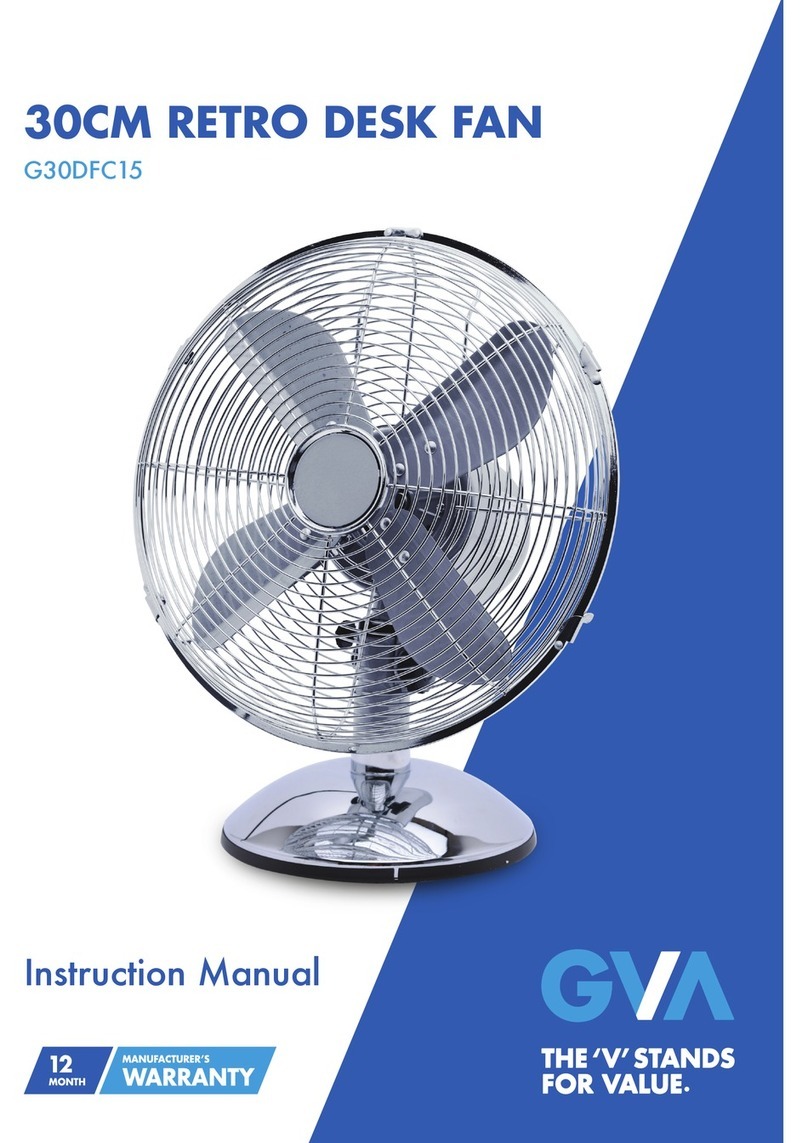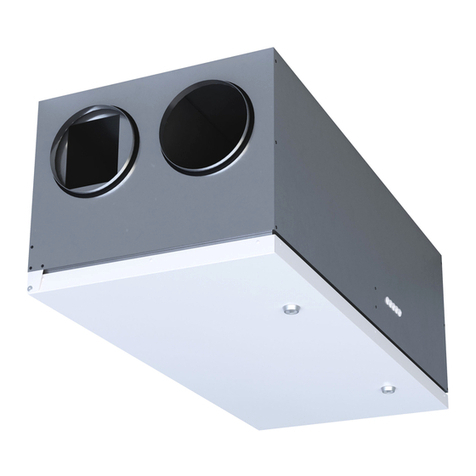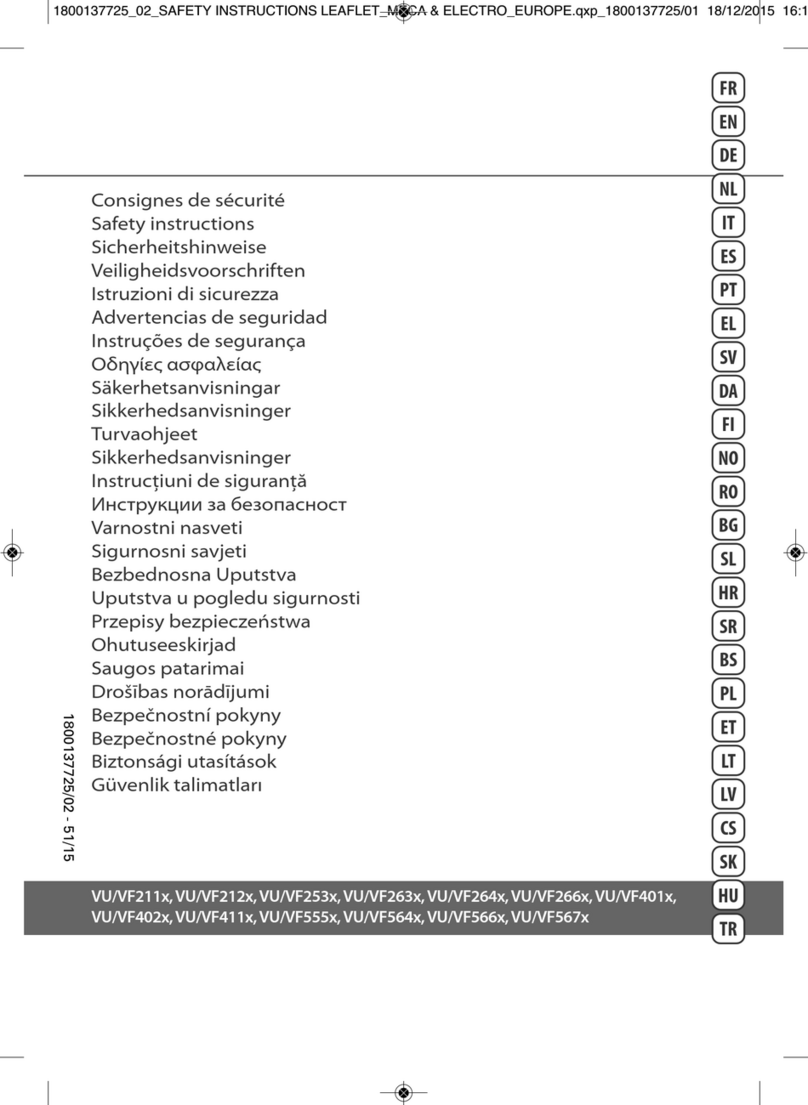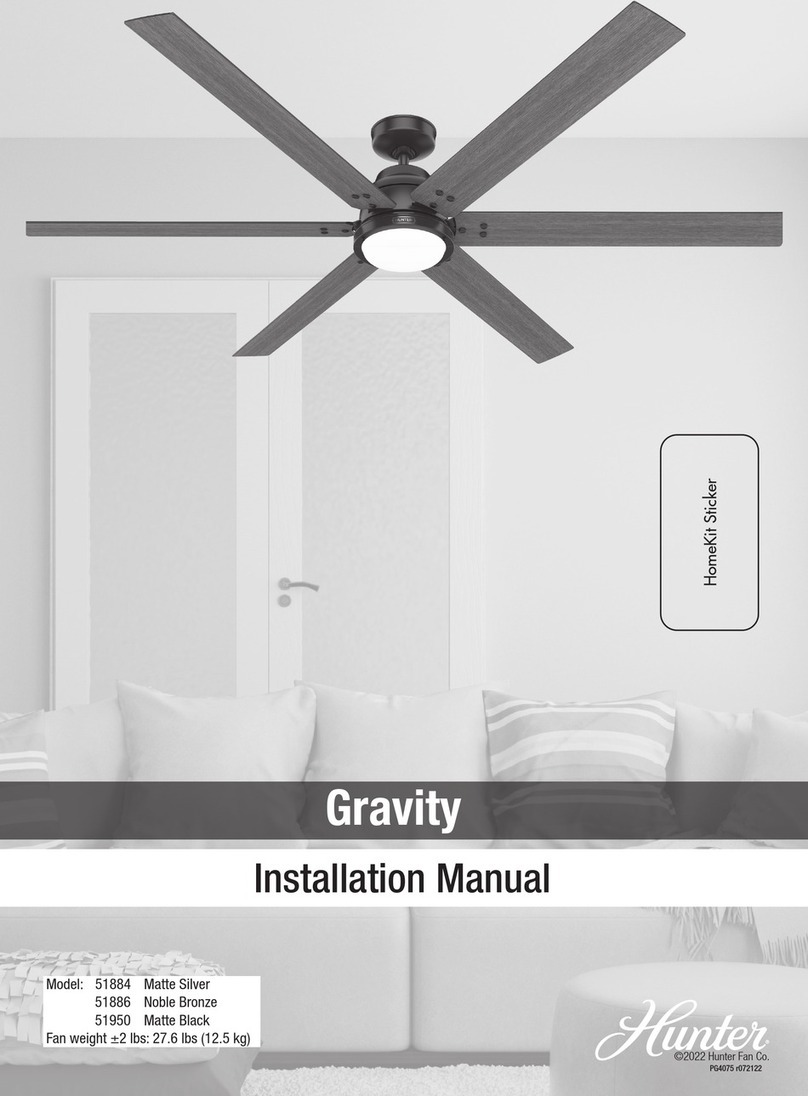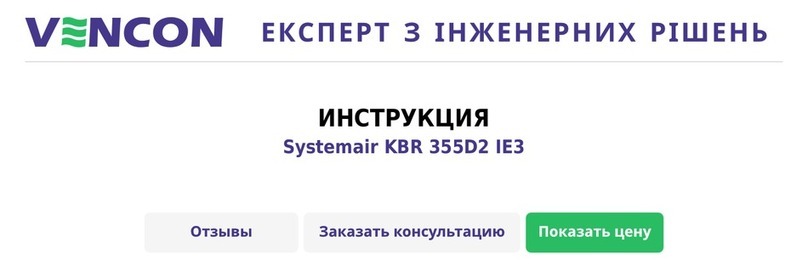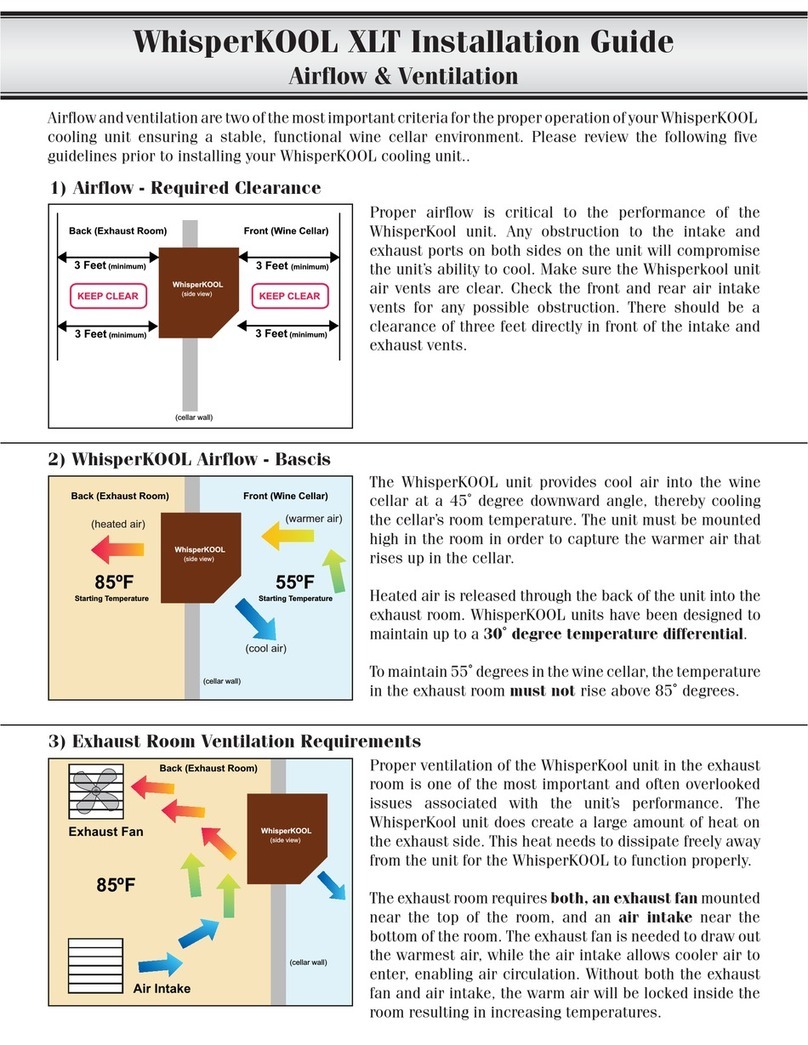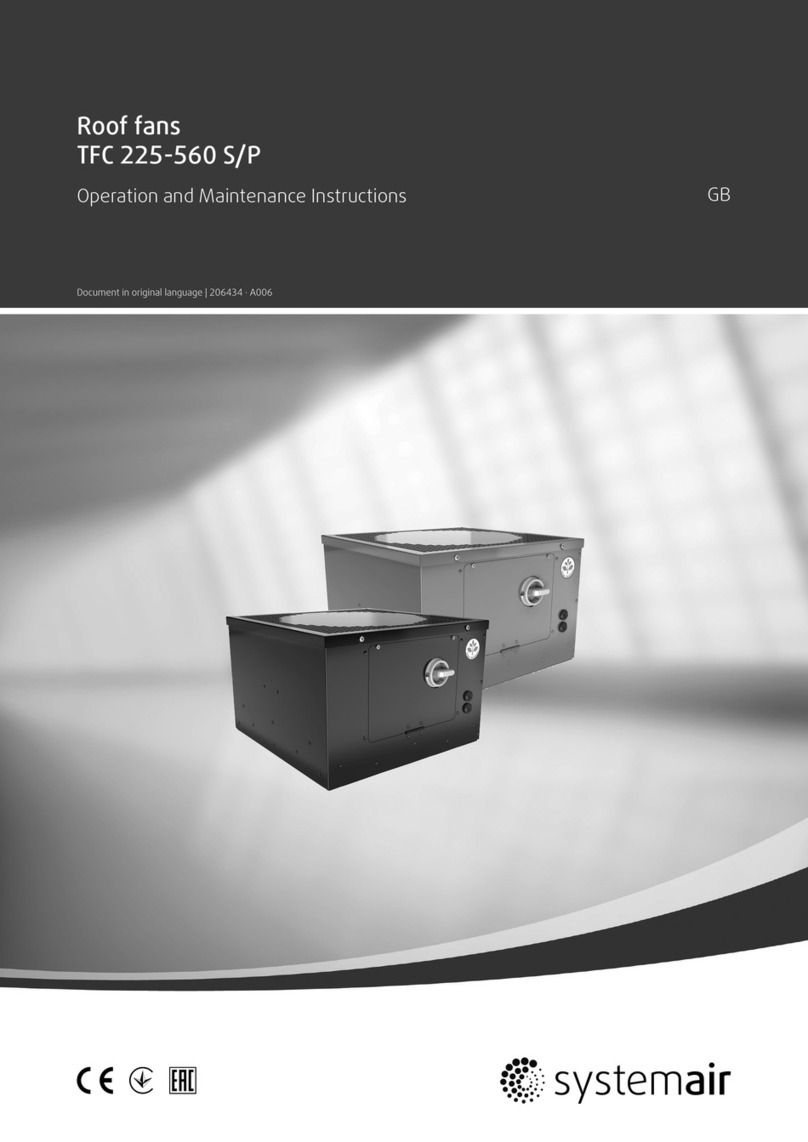Rockford Chimney Supply Rock-Flex AL29-4C User manual

Installation and Maintenance Instructions for Rock-FlexTM Stainless Steel Chimney Lining System
General Product Information
The quality and workmanship of Rock-FlexTM is reflected in the recognition Underwriters Laboratories has gi en these products. The rigorous
UL testing and listing requirements is your assurance of consistent quality in materials and manufacturing standards used for these lining
systems. In addition, the industry leading Fore er Lifetime Warranty on Rock-FlexTM is a further indication of our confidence in the quality of
this product. Thank you for choosing Rock-FlexTM !
The Rock FlexTM stainless steel lining systems are UL and ULC listed in 3”(7.6cm) to 12” (30.5cm) diameters. The lining system must be
installed by a qualified chimney or enting indi idual.
The criteria for installation must be in conformance with the specifications in the NFPA 211 (Standards for Chimneys, Fireplaces, Vents and
Solid Fuel Burning Appliances), National Building Code of Canada and local or state building codes, whiche er has jurisdiction. Contact local
building or fire officials about restrictions and installation inspection in your area. It may be necessary to obtain permits before installing the
chimney liner. Contact the local building authority for permit information.
Product A lications
The Rock-FlexTM lining system is intended for use with heating appliances burning home heating oil, natural or LP gas and solid fuels (pellet,
wood and coal) ented through a masonry chimney. Use 316-type stainless steel Rock-FlexTM for wood burning appliances, coal-burning
appliances, oil burning appliances, gas burning appliances, and solid fuel burning appliances. Use AL29-4C type stainless steel Rock-FlexTM
for high efficient oil burning and gas appliances. (Rock-FlexTM in AL29-4C should not be used with wood burning appliances). Use of
experimental fuels is not permitted and oids the warranty. The Rock-FlexTM system is intended for use in (1) new masonry chimneys, lined or
unlined, with at least (a nominal) 4”(10cm) of masonry all around, (2) an existing, properly built masonry chimney with cracked clay tile liner
and (3) factory-built chimneys. The lining system is intended to pro ide a properly sized flue for a heating appliance installed in a masonry
chimney that otherwise meets existing codes. The Rock-FlexTM liner may also be used as a flue for a fireplace. The liner must be connected to
the top of the smoke chamber by means of a bottom plate or other means, which pro ides an airtight and drip-free termination.
Chimney Ins ection and Cleaning
Prior to installation of the lining system thoroughly inspect and clean the chimney. All creosote (including tar glaze creosote), soot, dirt and
debris must be remo ed before the installation of the liner. Thorough cleaning of the chimney is a warranty prerequisite. The chimney must be
inspected for cracked, loose or missing stones, bricks or mortar joints. A chimney that is not structurally sound should not be relined. Make
any repairs necessary before proceeding with the installation of the liner. As a precaution it is recommended that a short piece of lining
material of the diameter to be installed is connected to a pulling cone and is drawn through the masonry chimney. This will ensure that no
obstructions exist that should be remo ed and will result in a smoother installation of the system. Clearances inside the masonry chimney:
Minimum air space clearance of the liner to the interior surfaces of the masonry chimney to be maintained is zero millimeters (inches). The
flue passageway must be checked for the smooth installation of the proper diameter liner. The chimney must be built of solid masonry brick,
block or concrete blocks at least (a nominal) 4 inches (10cm) in thickness.
Exterior of Masonry Chimney
The surrounding chimney construction shall comply with the NFPA 211 code, CAN/CSA-A405, Design and Construction of Masonry
Chimneys and Fireplaces and/or the National Building Code of Canada. Clearance to combustibles must meet or exceed the requirements
contained in the abo e-mentioned codes, all applicable local building codes, and the manufacturer’s installation requirements. Note insulation
requirement section, which can permit zero clearance from exterior of masonry to combustibles in some cases.
Termination Above Roof
The termination of chimney abo e a roof must be in accord with the requirements contained in the NFPA 211 code and/or CAN/CSA-A405.
This code requires that a chimney terminate at least 3feet (0.9m) abo e the point where it penetrates the roof and 2 feet (0.6m) higher than
any structure within a 10-foot (3m) radius. All Rock-FlexTM installations must utilize a UL or ULC appro ed chimney cap.
Wall Penetration
For wall or chimney penetrations other than listed in our installation instructions consult the NFPA 211 code and/or CAN/CSA-A405 code and
any other local codes. Wall penetration assemblies cannot be located directly behind a heating appliance.
Sizing the Liner
For solid fuels, the liner is to be sized in accordance with the actual size (square inches or centimeters of the cross-sectional area) of the
exhaust opening of the appliance, unless otherwise specified in the manufacturer’s instructions. To determine the proper diameter of liner for
oil burning appliances refer to the NFPA 31 Oil Standard, the National Building Code of Canada, the Installation Code for Oil Burning
Equipment, CAN/CSA-B139, or the appliance manufacturer’s instructions; for LP or natural gas burning appliances refer to the NFPA 54 Fuel
Gas Code Book, CAN/CGA-B149.1 and CAN/CGA-B149.2 or the appliance manufacturer’s instructions. Local and/or state building codes,
whiche er is the authority ha ing jurisdiction, may specify other sizing requirements.
If the liner is for a fireplace chimney, the cross sectional area of a round liner is to be a minimum of 1/12th of the area of the face opening of
the fireplace. O al, square or rectangle shaped liners shall be a minimum of 1/10th of the area of the face opening of the fireplace.
The o erall length of the liner system will be determined by the components required, the height of the masonry chimney and the top
termination. The system should be a minimum of 8 feet (2.5m) in height but not greater than 75 feet (22m). If using two or more liner sections
joined together by means of a connector, any connector should support no more than 50 feet (15m) of liner.
Ovalized, Rectangularized or Squarized Liner
If a round liner will not fit the inside dimensions of a chimney, Rock-FlexTM liners may be o alized, rectangularized or squarized at our factory
to allow for proper fit. Keep in mind that any change in the original round shape of the liner will alter its cross-sectional area. Refer to
Rockford Chimney Supply’s shaped liner charts found on our website or call for calculation assistance when ordering factory appro ed,
shaped liner. In fitting any factory-fabricated (o alized, rectangularized or squarized) liner, you must ensure that you still maintain the required
cross-sectional area of the liner required for the appliance to be connected.
Insulation Requirements
For Solid Fuel A lications
Insulation pro ided for the Rock-FlexTM system will be a single ½” (13mm) thick layer of insulating blanket. This insulating system is listed
to allow zero clearance from the chimney masonry exterior to combustibles. The 8 lb. density insulating blanket must be wrapped around

the entire length of the liner in an unlined, partially lined, or cracked clay tile liner application.
Alternative EverGuardTM Insulation Mix Method
The Rock-FlexTM lining system can be insulated using E erGuardTM Insulation Mix. A 1 inch (25mm) layer of E erGuardTM Insulation Mix
between the liner and 4 inch (10cm) nominal masonry pro ides a zero clearance listing from the chimney masonry exterior to
combustibles. If the clay tile liners are in good condition and the chimney meets existing codes, no insulation is necessary.
For Oil or Gas A lications
Rock-FlexTM is listed to be installed without insulation for oil and gas appliances in an unlined, damaged clay tile lined, or good condition
clay tile lined chimney. Oil and gas appliances do not require a minimum clearance between the outside of the liner and the inside of the
masonry chimney. Rockford Chimney Supply has listed Rock-FlexTM in this manner recognizing that insulation can cause clearance
issues in certain masonry chimneys. Howe er, it is good practice to insulate e en with gas or oil appliances to stabilize draft and
minimize condensation. One layer of 1/2” (6.5mm) insulation is an excellent way to meet this need. See insulation installation instructions
for further information.
Rock-FlexTM System Materials
Use of any parts or materials not specified in this installation manual may not pro ide a listed system.
A roved Connections
Appro ed connections of a Rock-FlexTM liner system are, (1) a tee section, (2) a UL listed direct connect system, (3) a connector directly
attached to the heating appliance, (4) a masonry fireplace flue.
A roved Com onents
Rockford Chimney Supply products ha e been UL and ULC tested with the Rock-FlexTM system. These appro ed components include, (1)
liner, (2) top plates, (3) support top clamp, (4) storm collars, (5) chimney caps, (6) screw supports, (7) tee connections, (8) uni ersal
connectors, (9) insulating wrap, (10) retractable wire mesh, (11) clamps to secure insulation, (12) aluminum foil tape, (13) E erGuardTM
insulation mix, (14) stainless steel self-tapping screws.
Installation Instructions
Note: when installing a Smooth Wall liner, install with the RED ARROWS ointing UP.
(CAUTION: Ends of liner and edges of cap, top plate, tee and connectors can be ery sharp! Rockford Chimney Supply recommends the use
of glo es during installation.)
(WARNING: Watch out for o erhead power lines during installation.)
1. Pre aring the Liner for Installation
a) Remo e the liner and components from the packaging. On a flat le el surface, roll out and straighten the lining material.
b) Attach the necessary bottom termination connector, which may be a tee or a uni ersal connector, to the liner by inserting the liner into the
connector as far as possible. If using the tee connector, secure the tee cap to pre ent it from falling off during installation. Then, using a
5/16” (8mm) nut dri er, tighten the hose clamp band firmly around the liner. CAUTION: do not o er tighten the clamp!
c) To find the length of the liner needed, measure from the point at which the bottom connector will stop in the chimney to the top of the
chimney crown and add 12” (30cm). This will be the total length of liner needed. Cut the liner to size as needed. When cutting Rock-FlexTM
the use of a grinder, circular saw, or reciprocating saw with a metal cutting blade is recommended. File or grind any rough or sharp edges
for your safety.
2. Insulating the Liner (if required)
Method #1: Using Insulating Blanket Wra
(CAUTION: Foil edges of insulation are ery sharp!)
a) Always ensure that the bottom connector has been installed (tee or uni ersal connector).
b) The liner must be insulated from the bottom of the connector (in the case of a tee from where the tee cap is installed up and in the case of
a uni ersal connector from where the connector would stop on insertion into the heating appliance) to the crown. After determining this
length, roll out the insulating wrap and cut to this length.
c) The insulating wrap must o erlap along its length by a minimum of 1” (2.5cm). To ensure you ha e the proper width of insulating wrap
multiply the liner diameter by 3.14 plus 1” (2.5cm) for o erlap. You may trim the width of the insulation to this amount but is not necessary.
A wider o erlap is allowed but may cause installation difficulties in tight clearance situations.
d) With the insulating wrap rolled out (foil face on the ground) on a le el surface, lay the liner and its bottom termination connector (which
was pre iously attached) in the center of the insulation. At the bottom end of the insulation, line up the bottom connector as outlined in
step b) abo e. Remember that at the top the insulation will be e en with the chimney crown.
e) Begin wrapping the insulation around the liner. After o erlapping the wrap by at least 1” (2.5cm) hold the wrap in place at approximately 1
foot (30cm) inter als with foil tape. You may also use spray adhesi e to assist you in holding the insulation against the liner.
f) Once insulation is in place apply a continuous ertical length of foil tape from the top to the bottom of the o erlapped insulation seam.
g) Now encapsulate the insulated liner using retractable wire mesh. Unroll the correct size mesh and pull it o er the entire length of insulated
liner. At the bottom of the insulation secure the mesh and insulation in place with a stainless steel hose clamp. Now at the top of the liner,
stretch the wire mesh tight and while holding mesh tight, clamp the insulation and wire mesh in place using a stainless steel hose clamp.
Trim away excess mesh. With long liner lengths or tight clearances you may also wrap the entire length of insulated liner with stainless
steel wire, spirally wrapped and then twisted on itself at each end to hold it in place. You are now ready to install the liner.
Method #2: Using EverGuardTM Insulation Mix
E erGuardTM Insulation Mix is poured into the chimney after the liner is installed. E erGuardTM Insulation Mix is a pre-mixed insulation material
that only requires the addition of water at the installation site.
a) To prepare E erGuardTM Insulation Mix, empty bag(s) into a mortar mixing box or wheelbarrow. Add 4 to 7 gallons (15 to 26.5 liters) of
water per bag of E erGuardTM Insulation Mix and mix with a hoe or other mixing tool. You ha e achie ed the proper consistency and water
content when the material is damp, but still granular. Squeeze a handful of your mixed material - little or no water should appear. Properly
prepared E erGuardTM Insulation Mix is able to be poured into the oid between the liner and the chimney like “loose fill”.

b) When pouring E erGuardTM Insulation Mix between the liner and the chimney, distribute the material e enly around the liner. Spacers may
be used to center the liner in the chimney ca ity.
c) Vibrate the liner by firmly tapping it and continue to pour in insulating material until the chimney is filled to the top. Be sure no E erGuardTM
Insulation Mix has fallen into the liner.
d) All heating appliances or fireplaces can be fired right after installation. Keep flue gas temperatures below 700 degrees F (371 degrees C)
for a period of three weeks. This allows for a gradual drying process of the insulating material.
e) Remember, a 1” (2.5cm) layer of E erGuardTM Insulation Mix between the liner and 4” (10cm) nominal masonry pro ides a zero clearance
listing from the chimney masonry exterior to combustibles.
3. Installing the Liner
Be sure to check abo e and around the chimney for antennas, power lines, or any other obstacles before beginning the installation. Be sure
that the liner does not come in contact with electrical or any other wires.
a) In some installations the use of a high quality pulling cone may be necessary.
b) The height of the structure, roof pitch and other factors will influence how you lower the liner into the chimney. Do not install a longer
length of liner than the a ailable manpower can handle.
c) Lower the liner from the top of the chimney, keeping it centered in the flue opening and away from the edges. This will protect the liner and
the insulating wrap. You may need to ha e someone at the bottom of the chimney with a rope (caution: do not use a metal conducti e
chain) attached to the pulling cone to assist in guiding the liner into the chimney. DO NOT FORCE THE LINER INTO THE CHIMNEY.
d) Once the bottom of the liner or bottom connector is at its desired position, trim the top of the liner to 4” (102mm) abo e the crown. (For
installations, it is recommended that the tee be secured and supported within the chimney. For Rock-FlexTM , this is especially necessary in
the case of long lengths of liner exceeding 35 feet (10.6m). This can be accomplished using angle iron.)
4. Com leting the To Termination
a) With the tee or uni ersal connector held in place at the bottom, place a hea y bead of silicone caulk around the chimney crown or top of
the clay flue tile, if it extends abo e the crown. Place top plate o er the liner and press firmly into silicone caulk. (Top plate may be
trimmed as needed).
b) Using a 5/16” (8mm) nut dri er, tighten the hose clamp band around the liner. CAUTION: do not o er tighten the hose clamp band! This
secures the liner to the top plate. OPTIONAL: The top plate flashing has four predrilled holes, which can be used to tap-con the top plate
to the crown.
c) Install the cap by fitting it o er the collar of the top plate. Tighten the hose clamp band of the cap onto the top plate collar. Your top
termination is now complete.
With Rock-FlexTM … Hose clam causing roblems in tight clearance situations?
In some tight clearance installations, we realize the worm screw on the fastening hose clamp can cause problems. In these situations,
remo e the hose clamps and cut off the straps that secure the hose clamps to the tee or the uni ersal connector. Then using four #8 X ¾”
(M4 X 20) self-tapping stainless steel screws (90 degrees apart) secure the liner to the connector or tee. It is necessary to use the “liner
screw support” fitting, which slides inside the liner, at the female end of the connector or tee, for the strongest connection possible when
using self-tapping screws. This method of fastening still pro ides you with a UL listed system!
Alternate Chimney To Terminations for Rock-FlexTM
The standard chimney top termination for a Rock-FlexTM lining system is the use of a Rock-FlexTM top plate and cap. Howe er, some
installations may require, or you may desire, an alternati e top termination. Other chimney top terminations are appro ed as follows.
1. Liner, mortar secured, to crown with any listed rain ca : Insulate liner to within 4” (10cm) of chimney top. Fill the remaining 4”(10cm)
with mortar or crown mix and form a slope from the liner to the outside edge of the chimney. Attach listed cap to the liner.
2. Liner, mortar secured, to clay flue tile with any listed rain ca : Insulate liner to within 4” (10cm) of chimney top. If not already existing,
slip a full or partial length clay flue tile o er the liner. Fill the gap between the clay flue tile and the chimney with mortar or crown mix and
form a slope from the flue tile to the outside edge of the chimney. Fill the gap between the liner and the flue tile with mortar or crown mix.
Attach listed cap to the liner.
3. Slate Flue Covers: In many residential communities slate flue co erings may be desirable. Howe er, sufficient protection from
precipitation and debris must be ensured. To make certain of this protection do the following: (1) Determine the distance between the top
of the liner and the bottom of the slate co ering, (2) Di ide this measurement by 2.5, (3) This number gi es you the minimum o erhang of
the co ering past the edge of the liner.
Example: the co ering is 12” (30cm) abo e the top edge of the liner. Di ide 12” (30cm) by 2.5, which equals 4.8” (12cm). The co ering
must extend at least 4 ¾” (12cm) in all directions past the liner opening. This pro ides a minimum 22.5 degree angle from liner edge to
co ering edge.
5. Com leting the bottom termination
Bottom Tee Terminations:
a) Locate the point where the connector pipe will pass through the chimney to the tee body. There must be an opening large enough for the
diameter of the connector pipe plus 2” (5cm) if adding insulation material to the snout.
b) If insulated- cut away the wire mesh and insulating wrap where the remo able snout will attach to the body of the tee. Only remo e
enough insulation to connect the snout.
c) Secure the snout to the body of the tee using the attached metal band, which wraps around the backside of the tee body. Ensure that the
snout is fitting properly to the tee body while securing the metal strap. Note: certain size tees ha e fixed snouts. If insulated- wrap the
snout (and any extension pipe used to extend beyond the exterior of the chimney face) with ½” (13mm) insulating wrap. Wrap the
insulation a minimum of 1” (25mm) beyond the exterior of the chimney face. Remember the insulating wrap seam and where it meets the
tee body insulation must o erlap a minimum of 1” (25mm). The seam of the wrap and where it meets the tee body must be co ered with
foil tape. This snout insulation may be held in place with wire but is not necessary.
d) Fill in the hole around the snout with brick and mortar.

e) Complete your connection to the heating appliance following all applicable codes.
Universal Connectors or other terminations:
The uni ersal connector may be connected to the exhaust collar of an appliance following the manufacturer’s fastening specifications.
Universal Take-Off (UTO) Installation
The uni ersal take-off (UTO) may be used when additional gas or oil appliances need to be ented into a Rock-Flex™ liner or when a UTO is
used in place of a standard round tee section on an o alized, rectangularized or squarized liner. When using a UTO the liner must be at least
1” (25mm) larger in diameter than the diameter of the UTO.
To install a UTO:
a) If none exists, cut a hole in the masonry chimney at the point where the UTO will be installed into the liner.
b) Cut a hole in the liner using the appropriate diameter hole saw (with a pilot drill bit). Make the pilot hole through the liner, then switch the
drill to re erse when cutting the main hole. Press the hole saw into the liner firmly until the hole is cut completely through. Remo e the
cutout from the liner.
c) Feed the UTO drawband around the liner and into the turnbuckle. Tighten the drawband firmly around the liner.
d) Apply a bead of high-temp RTV silicone between the UTO and the liner.
Congratulations!
You’ e successfully completed your installation. Please re iew the maintenance and warranty information with the end-user. Your compliance
with these installation instructions and applicable codes will ensure your customer long-lasting satisfaction. NOTE: As with any enting
system, the performance & safety of Rock-FlexTM lining systems is dependent on the use of parts and materials specified in these instructions.
Substitution of unauthorized parts may increase the risk of fire, appliance malfunction, property damage, personal injury or death. All
installations must be in accordance with local codes, NFPA 211 standards, and/or the National Building Code of Canada, and the
manufacturer’s instructions.
Maintenance Instructions
The lining system must be installed and ser iced by a qualified chimney or enting professional. The criteria for the inspection and
maintenance must be in conformance with local or state building codes, whiche er has jurisdiction. It is recommended you use an inspection
form and make notes that you can re iew with the homeowner.
Warning For Solid Fuel A lications
Creosote and Soot-Formation and Need for Removal: When wood is burned slowly, it produces tar and other organic apors, which
combine with expelled moisture to form creosote. The creosote apors may condense on the inside of the chimney liner during slow-burning
firing periods. As a result, creosote residue accumulates on the chimney liner. When ignited, this creosote makes an extremely hot fire. The
chimney liner system should be inspected at least once e ery two months during the heating season to determine if a creosote or soot
buildup has occurred.
If creosote or soot has accumulated, it should be remo ed to reduce the risk of a chimney fire.
Maintenance Procedures
It is important that the chimney lining system be checked and cleaned annually. This is for the safety of the homeowner and necessary to
meet the warranty requirements of Rock-FlexTM. As noted abo e, in the case of solid fuel burning appliances, more frequent maintenance may
be required, depending on use. The entire system, from the connection at the appliance to the top of the liner, must be completely inspected
and cleaned.
To clean the chimney lining system, the following steps are recommended :
1. Remo e cap.
2. Select the proper sized nylon, poly or natural bristle chimney brush to clean the liner. Be sure the brush head passes throughout the
complete length of the liner, including the connectors, terminals and tees.
3. In some instances, proper cleaning will require remo ing the appliance and disassembling the connector assembly to thoroughly inspect
and clean parts that cannot be reached otherwise.
4. Inspect and clean the chimney cap. Spark arrestors and other screens may be necessary or required in some areas, but may be
susceptible to blockage from creosote or through freezing moisture in areas of low ambient temperature.
5. Reinstall chimney cap.
6. Before the initial firing of the appliance, check the appliance’s operating instructions for initial firing precautions.
Additional Information
1. Rock-FlexTM lining systems are intended for use with heating appliances burning home heating oil, natural or LP gas and solid fuels (pellet,
wood, and coal). Use of experimental fuels is not permitted and oids warranty.
2. Use only components listed for use with the Rock-FlexTM lining system.
3. For solid-fuels, the chimney liner is not to be sized less than that specified in the appliance manufacturer’s instructions.
4. If not already in place, post notices near the point where the connection is made to the gas ent or roof jack, concerning limitations to use
with either gas or gas and oil appliances only, when a liner is for use with either gas or gas and oil fuel only.
Rockford Chimney Su ly, Inc.
www.rockfordchimneysu ly.com
1-866-708-2446
Re ision 042314
Table of contents
Popular Fan manuals by other brands
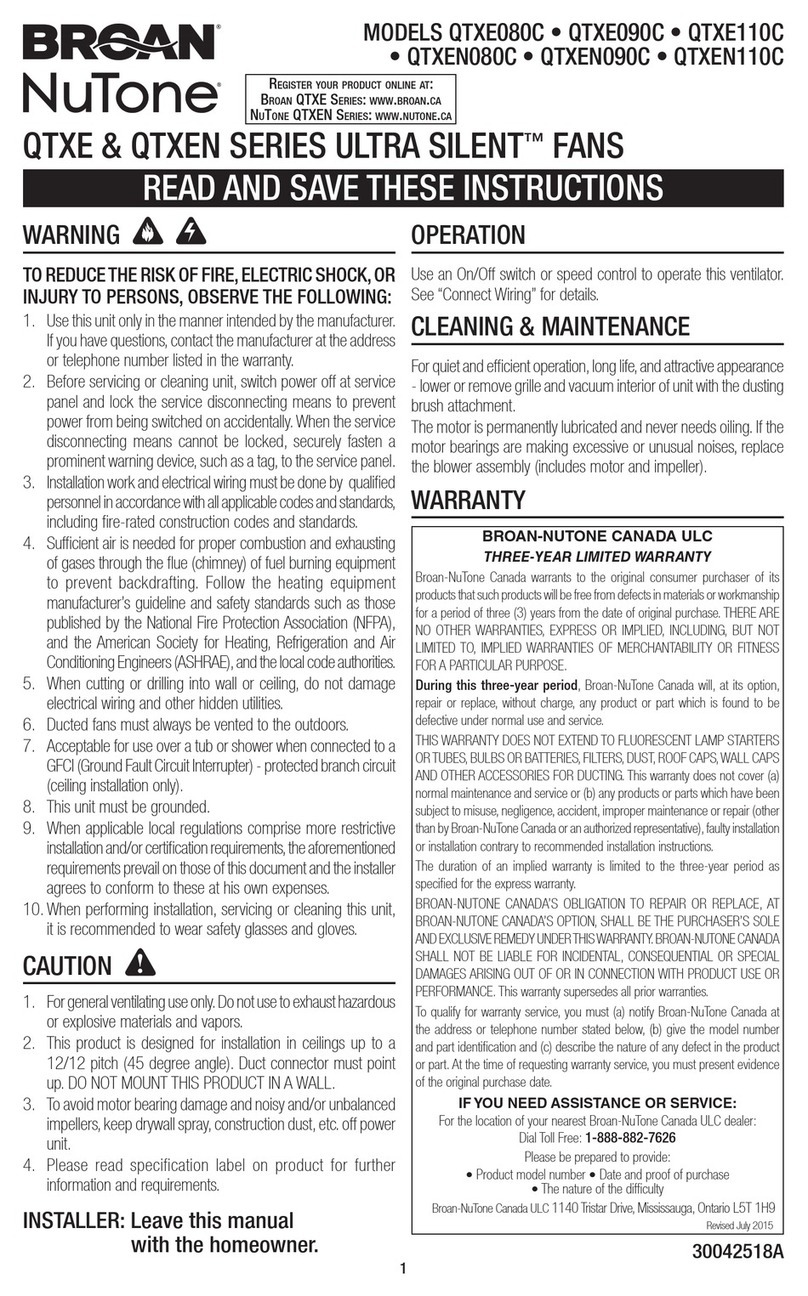
Broan
Broan QTXE080C instructions

Panasonic
Panasonic FV-15TGUZ Operating and installation instructions

Monte Carlo Fan Company
Monte Carlo Fan Company 5DS34 Series Owner's guide and installation manual
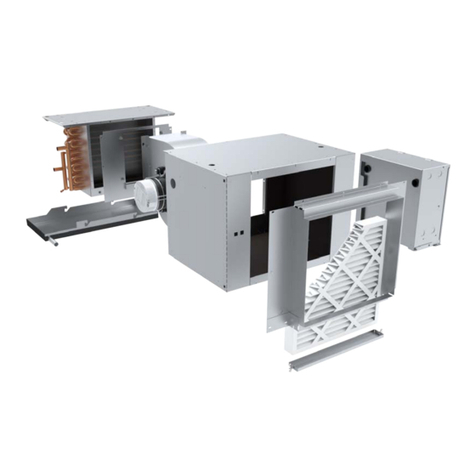
Enviro
Enviro HP Series Installation operation & maintenance
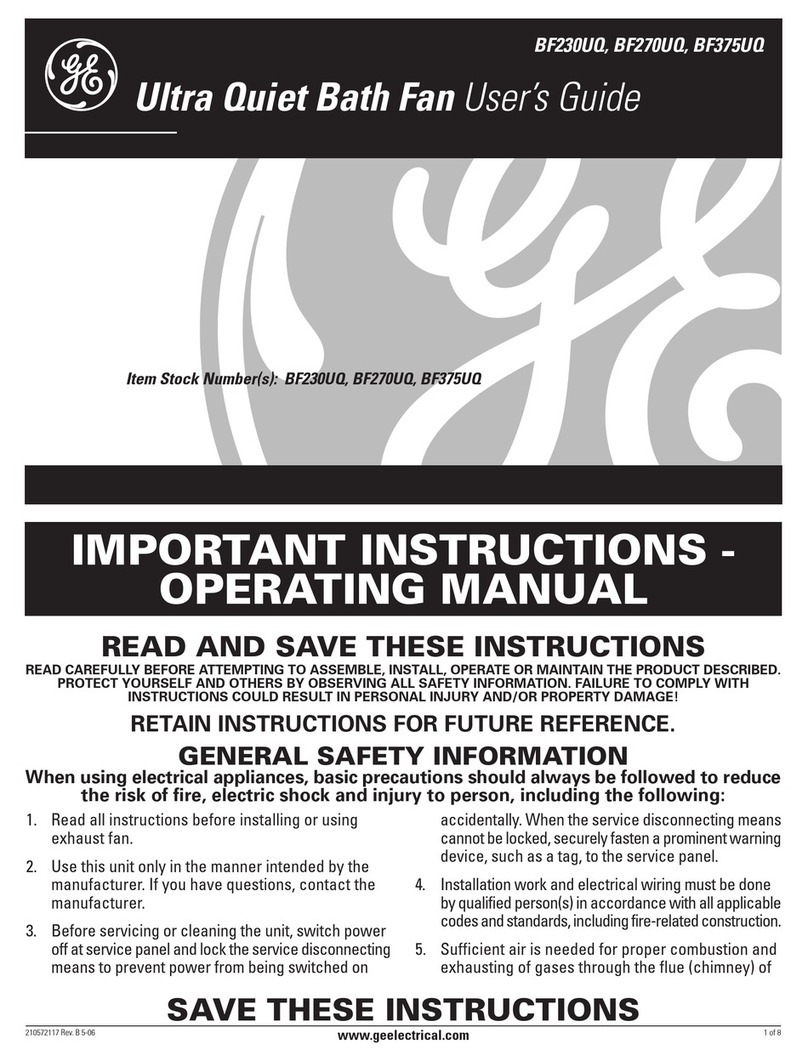
GE
GE BF230UQ user guide
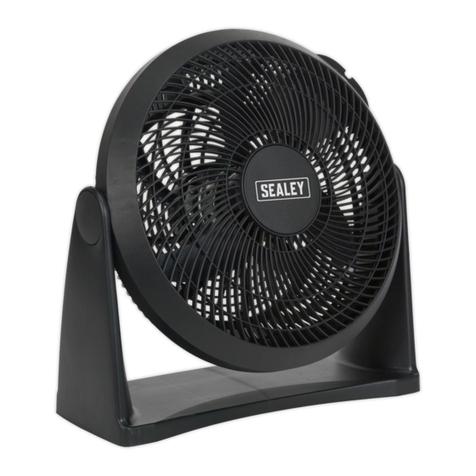
Sealey
Sealey SFF12 instructions



